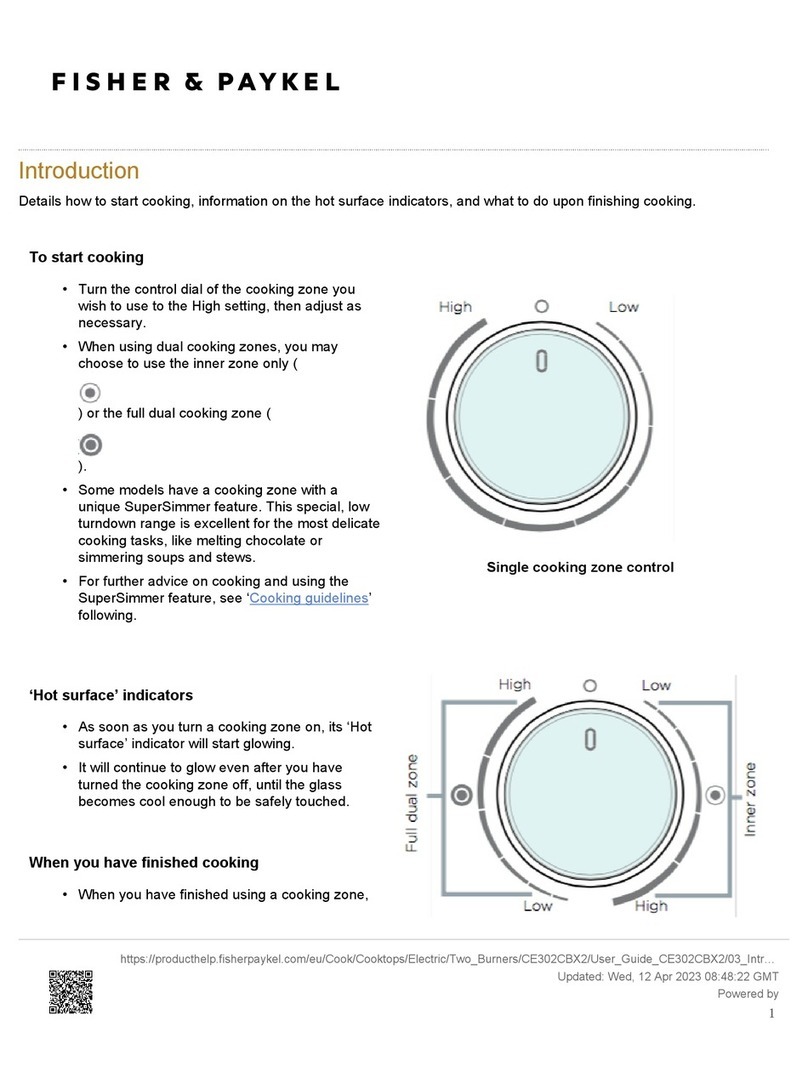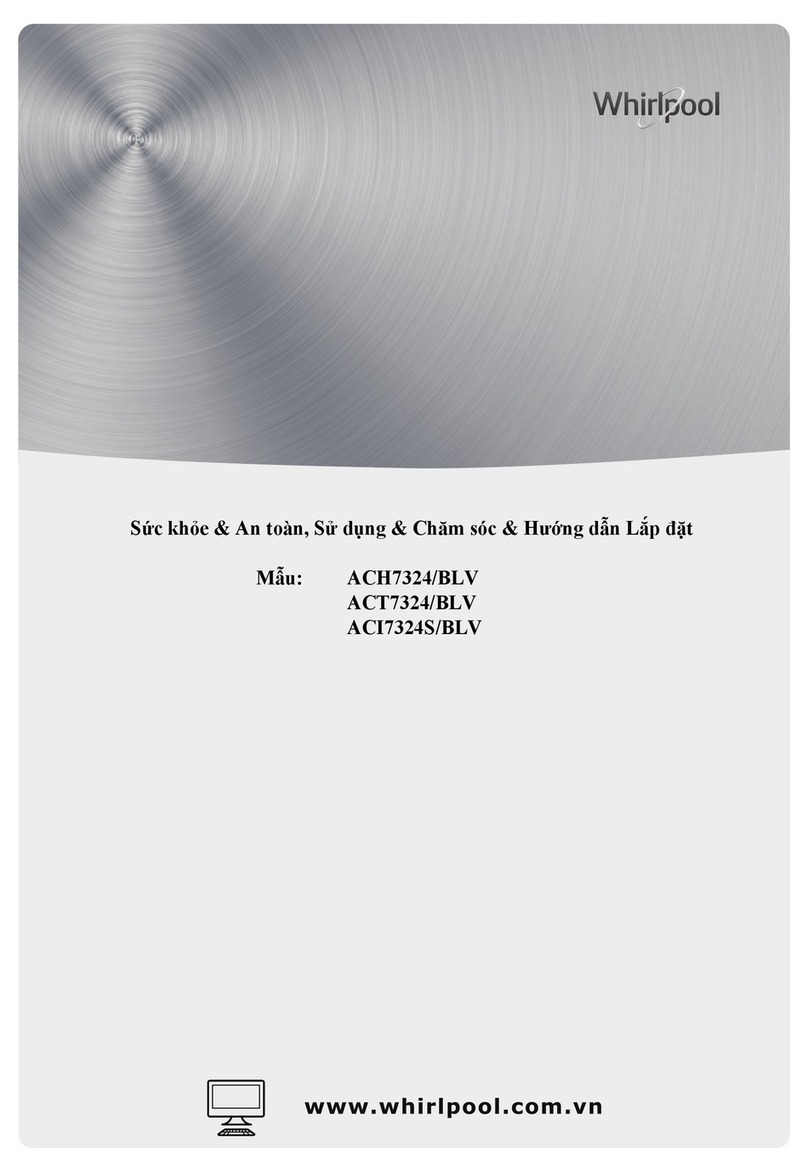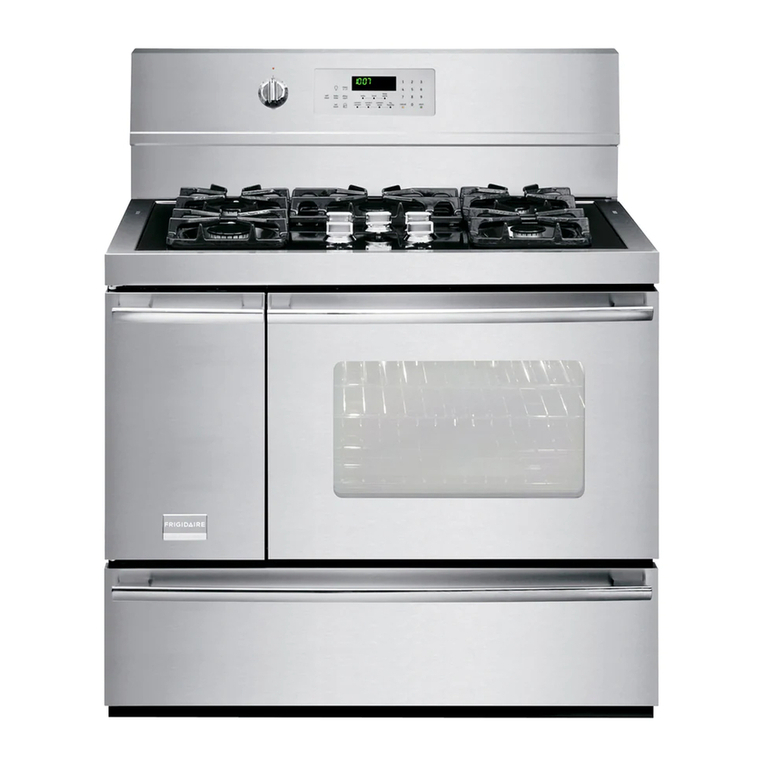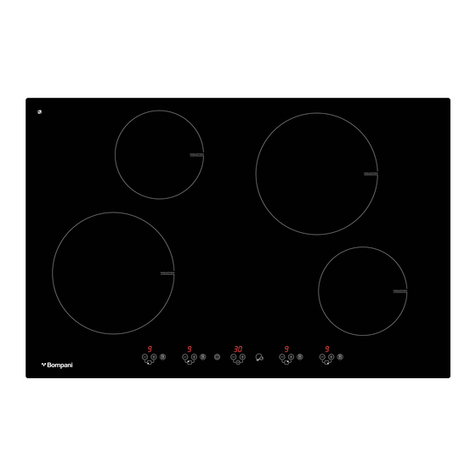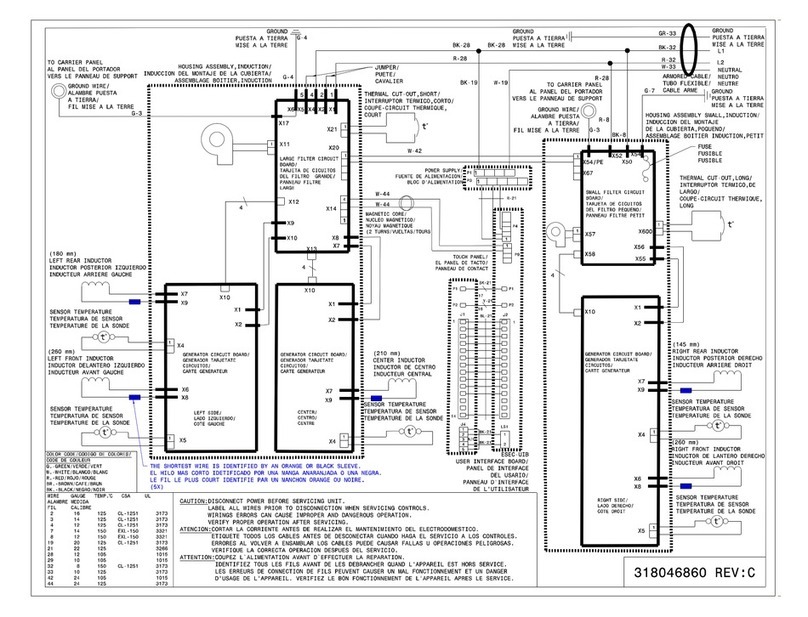
54
• For personal safety, wear proper apparel, loose fitting garments or hanging sleeves should never
be worn while using this appliance. Some synthetic fabrics are highly flammable and should not
be worn while cooking.
• Do not use aluminum foil to line any part of the oven or rangetop. This will cause heat to be
trapped underneath it. This trapped heat can upset the cooking performance and can damage
the finish of the oven or the rangetop parts.
WARNING! NEVER cover any slots, holes or passages in the oven bottom or cover
an entire rack with materials such as aluminum foil. Doing so blocks airflow through the oven and may
cause carbon monoxide poisoning. Aluminum foil linings may also trap heat, causing a fire hazard.
This appliance is for cooking. Never use the oven or rangetop to warm or heat a room. This could
damage the rangetop or oven parts.
• When using the rangetop: Do not touch the burner grates or the immediate surrounding area.
Areas adjacent to the burners may become hot enough to cause burns.
• When using the oven: Do not touch the interior surfaces of the oven, the exterior area
immediately surrounding the door or the back trim. The surfaces directly above the oven door
may be hot if the oven has been operated with the door open, or if something has prevented the
door from sealing.
• Never leave the rangetop unattended when using high flame settings. When cooking with high
flame settings, boil-overs may cause smoking and greasy spillovers may ignite. More importantly,
if the burner flames are smothered by a severe boil-over which affects the igniter, unburned gas
will escape into the room.
• Only certain types of glass, heat-proof glass-ceramic, ceramic, earthen ware, or other glazed
utensils are suitable for rangetop use. Some utensils may break with sudden temperature
changes. Use only on low or medium flames settings according to the manufacturer's directions.
The use of professional utensils is recommended.
• Do not heat unopened food containers; a build up of pressure may cause the container to burst.
• During cooking, set the burner control so that the flame heats only the bottom of the pan and
does not extend beyond the bottom of the pan. This could heat and/or melt the handles, and
may increase cooking time.
• Always use utensils that have flat bottoms large enough to cover the burner. The use of
undersized utensils will expose a portion of the flame to direct contact and may result in ignition
of clothing.
• To minimize burns, ignition of flammable materials and unintentional spill overs, position handles
of utensils inward so they do not extend over adjacent work areas, cooking areas, or the edge of
the rangetop.
• Hold the handle of the pan to prevent movement of the utensil when stirring or turning food.
• Grease is flammable. Let hot grease cool before attempting to handle it. Avoid letting grease
deposits collect around the rangetop burners. Clean after each use or boil over.
• Do not remove the grease drip-pan from the griddle or grill until completely cool.
• For proper lighting and performance of the rangetop burners, keep the burner ports clean. It may
be necessary to clean these when there is a boil over or when the burner does not light, even
though the electronic igniters click.
• Do not use the grill for cooking excessively fatty meats or products which promote flare-ups. Do
not use cooking utensils on the grill.
• Clean the rangetop with caution. Avoid steam burns; do not use a wet sponge or cloth to clean
the rangetop while it is hot. Some cleaners produce noxious fumes if applied to a hot surface.
Follow directions provided by the cleaner manufacturer.
• Be sure all the range and/or rangetop controls are turned off and the appliance is cool before using
any type of aerosol cleaner on or around the appliance. The chemical that produces the spraying
action could, in the presence of heat, ignite or cause metal parts to corrode.
• Place oven racks in desired position while the oven is cool. If a rack must be moved while the oven
is hot, do not let the pot holders contact the hot interior of the oven.
• Use care when opening the oven door; let hot air or steam escape before removing or replacing
foods.
• Do not rub, damage, move or remove the door gasket. It is essential for a good seal during baking.
Wash the gasket with hot water only.
• Clean the ventilator hood and filters above the range or rangetop frequently so grease from
cooking vapors does not accumulate on them. The filters can be cleaned in a dishwasher or dish
drawer. Follow directions provided by ventilation manufacturer for cleaning.
• Turn the ventilator “OFF” in case of fire or when intentionally “flaming” liquor or other spirits on the
rangetop. The blower, if in operation, could unsafely spread the flames.
• DO NOT obstruct the flow of combustion or ventilation air to the appliance. Be sure a fresh air
supply is available.
• For safety reasons and to avoid damage to the appliance never sit, stand, or lean on the oven door
or cooking surface.
• Service should only be done by authorized technicians. Technicians must disconnect the power
supply before servicing this appliance.
WARNING!
California Proposition 65 - The burning of gas cooking fuel generates some by-products which are known
by the State of California to cause cancer or reproductive harm. California law requires businesses to warn
customers of potential exposure to such substances. To minimize exposure to these substances, always
operate this unit according to the manufacturer’s instructions and provide good ventilation to the room
when cooking with gas.
REQUIREMENTS FOR HOOK-UP TO GAS SUPPLY
• The gas supply connections should be made by a qualified technician in accordance with local
codes or ordinances. In the absence of a local code, the installation must conform to the latest
edition of National Fuel Gas Code ANSI Z.223.1 (Warning: this appliance must be installed by a
licensed plumber or gas fitter when within the Commonwealth of Massachusetts).
• A manual shut-off valve (supplied by the installer) must be installed in an
accessible location in the gas line external to the appliance for the purpose of
turning on or shutting off gas to the appliance.(In Massachusetts such shut-
off valves should be approved by the Board of State Examiners of Plumbers &
Gas Fitters.) The shut-off valve must be located within 6 feet (1.8 meters) of the
appliance it serves.
Important!
Caliber Appliances recommends installing the manual shut-off valve in a location readily accessible by the
customer, so that gas to the appliance can be shut off in an emergency situation. However, the appliance
must not be modified In any way to accommodate such placement.
• The gas supply line must not protrude beyond the back of the appliance as this would prevent the
product from being pushed completely against the wall.
• Make sure the gas supply is turned off at the wall valve before connecting the appliance.
• Leak-testing of the appliance shall be conducted according to the manufacturer's instructions. See
instructions in section 'Test and adjustments'.
SAFETY PRACTICES AND PRECAUTIONS SAFETY PRACTICES AND PRECAUTIONS
